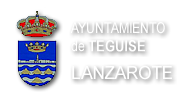The strategic situation of the Canaries at the centre of the Atlantic sea-routes always meant a massive presence of corsairs and pirates in Canary waters. Many of the pirates who were famous for their exploits in the Caribbean formed part of the Canary history turning these islands into ports of call where they practised their plundering with a certain impunity.
Jean Fleury
Jean Fleury was a French navigator who was introduced into piracy by the merchant Jean Ango,. The latter placed him at the helm of a fleet of four ships and five galleys to capture the vessels which were taking the American route.In 1522 he chased for bounty seven ships that had departed from Cadiz towards the Canaries. These vessels took refuge on La Isleta (Gran Canaria) where they were defended by a Canary naval force. His name is linked to the capture of the Treasure of Moctezuma (the last Aztec Emperor) near the Azores (1523) where it was taken from a Spanish expedition which was bringing it to Europe. Captured by Captain Martin Pérez Irizar (from Rentaría) he was executed in Toledo in 1527.
Le Clerc + Sores
The French pirate Francois le Clerc was nicknamed “jambe de bois” (peg Leg) having lost a leg in the Battle of Guernsey against the English in 1549. Le Clerc was placed in command of a powerful fleet which attempted the capture of the island of Peru in the Antilles. As well as this he plundered Santo Domingo, Puerto Rico and part of the Guayanan coast. On his return to France in 1553 he decided to attack the Canaries making for Gran Canaria where he was repelled. Instead he took Santa Cruz de la Palma with ease thanks to the skill of his Lieutenant Jacques de Sores. They plundered the city burning down houses and public buildings and collecting a huge booty of anything valuable.
Tabac Arráez y Soliman
The Algerian corsairs Tabac Arraez and Soliman had the doubtful honour of having made the biggest conquest that had ever been perpetrated in the Canarias: attacking Lanzarote in 1618, they made off with a booty of 900 captives and infinite objects of value. Their success was based on betrayal which gave knowledge to the invaders of where the majority of the population was hiding which was in the Cueva de Los Verdes (Haría). On leaving Teguise and Lanzarote both pirates made their way to La Gomera finding little to steal because by now all the islands were alerted to the presence of the Algerian plunderers. At last they made their way to Algiers, base port of the fleet and site of the slave trade, but on reaching the Straits of Gibraltar the Spanish Armada was awaiting them under the command of Miguel de Vidazabal and they were severely punished. They resecued many people and the prisoner Francisca de Ayala took the opportunity of recuperating the body and head of the sculpture of the Virgin of Guadalupe which had been stolen by the Algerians from the parish church of Teguise.
John Hawkins
John Hawkins was the English pirate who took over the Canaries as trampoline territory to carry out his piracy. The son of an old trader who knew the islands well, he exchanged merchandise for the sale of slaves. His associates in the Canaries, Pedro Soler and Pedro de Ponte, gave him contacts and legal protection to take slaves in Guinea which he later sold in the West Indies. In the 1560´s he often visited the Archipelago as a pirate having no hesitation in boarding other slave ships to rob their valueable human merchandise.
Sir Francis Drake
Sir Francis Drake was the most outstanding pupil of John Hawkins (they were cousins). He was famous not only as a corsair under the orders of Queen Elizabeth I of England but also a navigator and trader when in 1580 he circumnavigated the globe. A confessed enemy of Spain, he struck on several occasions against Felipe II by either attacking the invincible Armada or plundering the Hispano-American colonies. He made an unsuccessful first attempt to invade the Canaries (1583) as in La Palma he came up against the cannons of the Castle of San Miguel. Neither could he manage to penetrate into San Sebastian de La Gomera and could only pay a short visit to Valverde in El Hierro. His war adventures are linked to the West Indies where he made a fortune accepting piracy as a legal system of combat against foreign powers. The islands were for Drake rather a lost cause even in 1595 when he tried in vain to capture the city of Las Palmas de Gran Canaria. On this occasion he was accompanied by Hawkins and two English buccaneers who were desperate to obtain supplies for their voyage to America. His resounding defeat in Gran Canaria resonated at that time in the great literary works of Lope de Vega (La Dragontea) and Carrasco de Figueroa (El Templo Militante). Sir Francis Drake fue el discípulo más aventajado que tuvo Hawkins (eran primos). Su fama como corsario a las órdenes de su reina, Isabel I de Inglaterra, compite con la de navegante y comerciante, ya que en 1580 circunnavegó el globo terráqueo. Enemigo confeso de España atentó en varias ocasiones contra los intereses del monarca Felipe II, ya fuese atacando a la Armada Invencible, o saqueando las colonias hispanas de América. De su primera aventura en Canarias (1583) no salió bien parado, pues los intentos de invadir La Palma se toparon con los cañones del castillo de San Miguel. Tampoco logró penetrar en San Sebastián de La Gomera y sólo pudo hacer un corta visita a Valverde en El Hierro. Sus hazañas bélicas están relacionadas con las Indias Occidentales, lugar donde hizo fortuna al aceptar la piratería como sistema legal de combate frente a las potencias extranjeras. Canarias fue para Drake su asignatura pendiente, incluso en 1595 cuando intentó en vano apoderarse de la ciudad de Las Palmas de Gran Canaria. En esta ocasión estuvo acompañado por Hawkins y otros corsarios ingleses que buscaban con ansiedad los víveres que les permitieran llegar a América, fin último de la expedición. De su sonada derrota en Gran Canaria se hizo eco la literatura de la época dedicándole sendas obras los escritores Lope de Vega (La Dragontea) y Cairasco de Figueroa (El Templo Militante).
Morato Arráez
Morato Arráez was the scourge of Lanzarote when in 1586 he took part on one of the most virulent attacks that the island had ever experienced. When he disembarked in the Canaries he was already well-known as a pirate actin under the orders of the Viceroy Argel Mami Bajá. He was born in Haarlem at the heart of a Christian family who baptised him Jean Jansse. He left home at the age of 12 to enrol on the pirate ships where he learned his office at the hand of Kara-Ali and the terrifying Red Beards. He fought as a Turk in the assault on Malta in 1565 and was the Algerian hero who managed to remove two boats property of the Pope which were anchored in the port of Januti (Tuscany). His fame as a brigand of the seas caused him to appear in works of universal literature by such prestigious authors as Lope de Vega, Cervantes and Quevedo.
Walter Raleigh
Walter Raleigh was knighted by Elizabeth I of England in recognition of his many services to the Crown, amongst them the founding of the colony of Virginia in 1584. Born into the family of a country nobleman he began his fighting career in The War of Religions having converted to a Huguenot in his youth. Together with his brother Humphrey Gilbert he learned the tactics of piracy which he would later apply to benefit himself in the name of England. In 1599, after leaving prison where he had been interned for seducing one of the Queen´s ladies-in-waiting whom he was obliged to marry, he prepared an expedition to the Guayana attracted by the legend of “El Dorado”. Thus, in 1595, he sailed from Plymouth for the Americas calling at Tenerife and Fuerteventura where he stole cattle and assaulted two ships which were carrying weapons and barrels of wine.
Robert Blake
The name of Robert Blake has been linked to the Canaries since 1657 when he made a frustrated attempt to invade Tenerife. In the bloody battle, the English pirates captured the booty of six galleons and a dozen other ships which formed part of the Spanish fleet which was anchored near the Tenerife port. Blake was considered one of the greatest English sailors and as a result was the one to form the Royal Navy into a body of elite men which became the armed branch of the Monarchy which had a well-known policy of expansion of British territory. As the theorist of the Naval wars he drew up several treaties and had many occasions to put his ideas into practice especially in the Seige of Cadiz in the Anglo-Spanish War (1655-1666) under the orders of Oliver Cromwell.
Woodes Rogers
Woodes Rogers had the adventure of his life when, leaving England in 1706, he managed to sail to the Southern Seas. For his exploits he was named Royal Governor of the Bahamas. This journey was made by a medium depth fleet financed by Bristol tradesmen who chose Rogers because of his excellent reputation as a Captain of the Merchant Navy. Woodes Rogers realised on leaving port, that he had hardly any wine to combat the cold weather he would experience at Cape Horn and to remedy this he stopped off in Madeira. He intended to do the same thing in the Canaries but a pirate ship drew them towards Tenerife and, capturing the crew, they were exchanged for supplies in Puerto de la Cruz. It was during this voyage that Rogers rescued Alexander Selkin who had been abandoned on a desert island by Captain Padlin. Years later this adventure inspired the author Daniel Defoe to write his famous “Robinson Crusoe”.
George Clifford
The English pirate George Clifford, Earl of Cumberland considered the Azores as his own private booty for between 1585 and 1598 he made 13 more or less successful attacks on the islands.During his career as a pirate he was unable to put into practice his in-depth knowledge of Mathematics which he had acquired at Cambridge and his refined education became much more coarse and cruel as a result of mixing with the likes of Raleigh and Hawkins. He managed to equip a squadron in 1598 as his long-standing dream was to attack Brasil. In this voyage he made port of call in Lanzarote with the plan to kidnap the Marquis of Herrera and ask for ransom. What the pirate did not know was that the old Marquis had died several years before. During this attempt Teguise was taken over by the English pirate for eight days. Indiscriminate assaults were carried out every day and the Castle of Santa Barbara was penetrated where they stole dozens of pieces of artillery.











